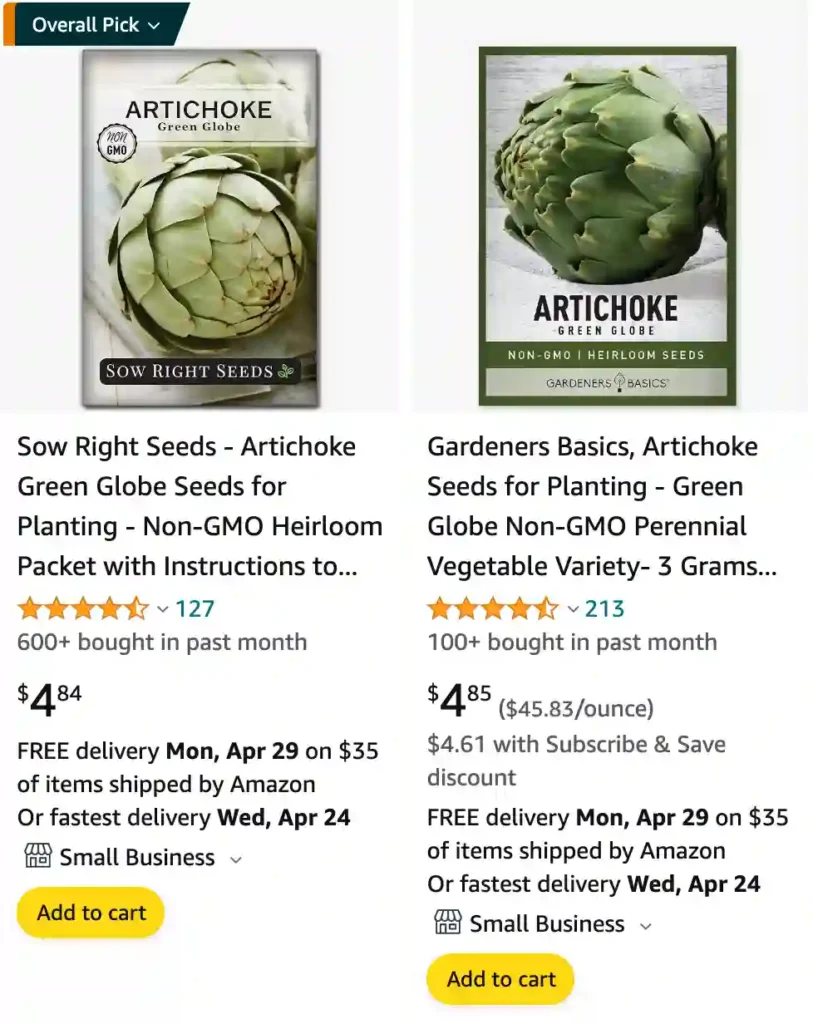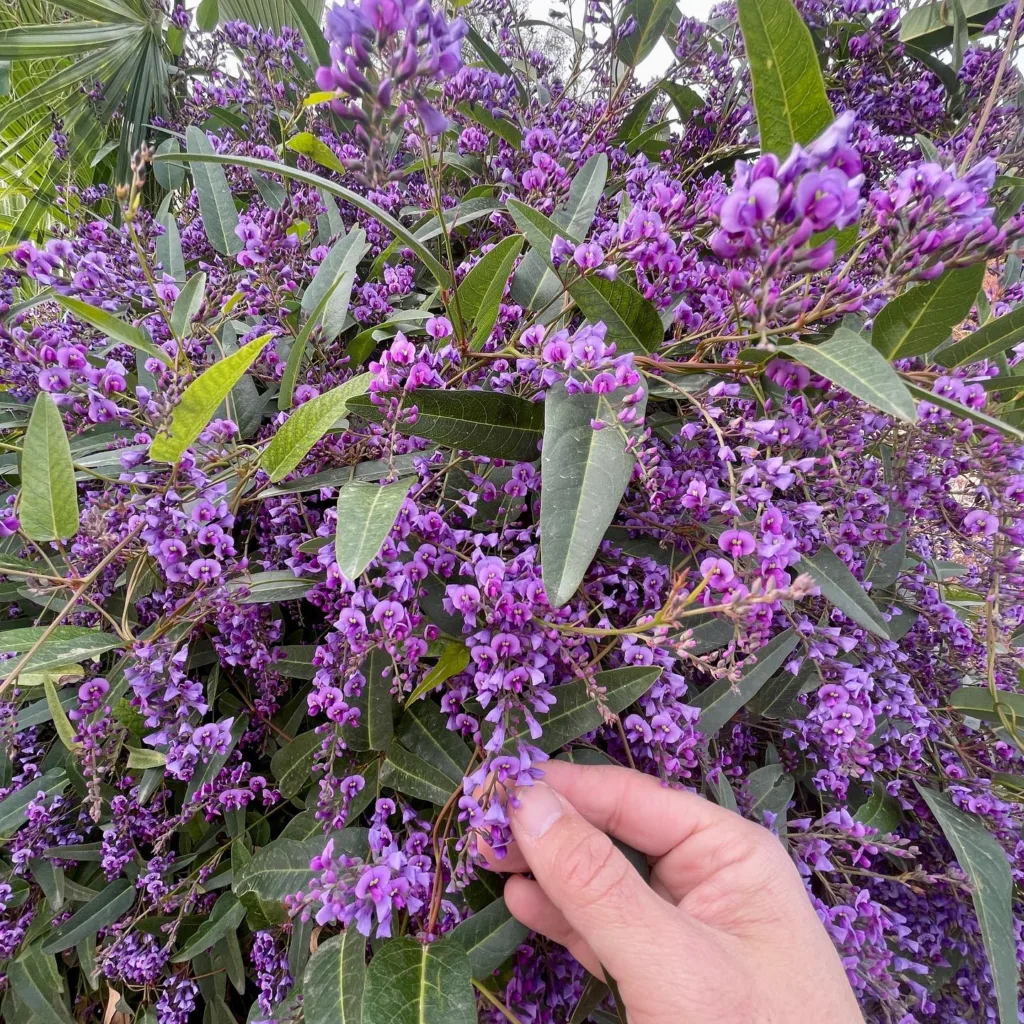
Introducing the Artichoke
As a devoted gardener and culinary enthusiast, my journey into the realm of plants has led me to discover the wonders of the artichoke (Cynara Scolymus). Also known as the globe artichoke, French artichoke, or green artichoke, this herbaceous perennial from the Asteraceae family has become a cherished addition to both my garden and dining table. Originating from the Mediterranean region, the artichoke captivates with its silvery-green leaves and large, purple thistle-like flowers. However, it’s the tender and flavorful flower buds, harvested before blossoming, that truly steal the show, offering a delightful gastronomic experience.
12 Species in Genus Cynara
Hearts of Palm vs Artichoke
Hearts of palm are kind of like the surprise guest at the artichoke party. They’re from a different tree altogether, but they have a similar texture and mild flavor to artichoke bottoms.
Artichoke vs Cardoon
Cardoon is like artichoke’s wild cousin. It’s thorny and not as easy to find, but the stalks taste similar when cooked.
Artichoke vs Brussels Sprouts
Not even close in my opinion! Brussels sprouts are miniature cabbages with a strong, cabbage-y flavor. Artichokes are in a whole different league.
Artichoke vs Jerusalem Artichoke (Sunchoke)
Totally different things! Jerusalem artichokes are these knobby root vegetables with a nutty flavor, more like sunchokes.
Artichoke Bottoms vs Hearts
Bottom line (pun intended), artichoke hearts are the soft, edible center of the artichoke, while the bottom is the wider base that holds the heart.
Artichoke Extract vs Milk Thistle
Both are supposed to be good for your liver, but artichoke extract is just from the artichoke leaves, while milk thistle uses the whole plant.
Artichoke vs Asparagus
These spring veggies are both delicious, but asparagus is thin and green, with a grassy flavor. Artichokes are more like a big, flavorful thistle bud.
Artichoke vs Avocado
Totally different! Avocado is a creamy, buttery fruit. Artichokes are savory and have a unique flavor all their own.
Cultivation Tips for a Bountiful Harvest
Growing artichokes can be a fulfilling experience, whether you’re a seasoned gardener or just starting. To ensure a healthy and abundant harvest, consider the following cultivation tips:
Optimal Growing Conditions
Artichokes thrive in full sun, requiring at least six to eight hours of sunlight daily. Well-drained, sandy soil with a slightly alkaline pH around 7.0 is ideal, preventing root rot. Adequate moisture is crucial, but be cautious not to let the soil become waterlogged.
Planting Time
The planting time depends on your climate. In warmer regions (USDA hardiness zones 7-11), artichokes can be grown as perennials, with seeds planted in late summer or young plants in mid-autumn. In cooler climates, where they function as annuals, spring planting is recommended.
Spacing
Due to their potential size, providing ample spacing of four to six feet between plants ensures healthy growth and proper air circulation, contributing to a thriving artichoke garden.
Watering
Regular and deep watering is essential, especially during dry periods, promoting the development of tender buds and a robust root system.
Fertilization
Being heavy feeders, artichokes benefit from organic fertilizers or well-rotted manure during planting. Periodic feeding throughout the growing season sustains their nutrient requirements.
Propagation
While growing from seeds is possible, propagating artichokes from offshoots is a viable method. In warmer climates, where overwintering is possible, new plants can be created from offshoots produced by established ones.
Overwintering
In colder regions, proper overwintering methods are crucial for perennial growth, with adjustments based on the USDA hardiness zone and winter severity.
Harvesting and Pruning: A Joyful Culmination
The joy of cultivating artichokes culminates in the harvest. Here are some insights into when and how to harvest, along with essential pruning practices:
Harvest Time
The center bud is ready for harvest when it reaches about three inches in diameter, with tightly folded bracts. Cutting the bud and leaving a one- to three-inch portion of the stem facilitates handling. Harvesting side shoots when firm and one to three inches in diameter ensures continuous production.
Pruning
After the artichoke has borne fruit, pruning it down to just above the ground and applying a heavy layer of mulch encourages new growth, ensuring a healthy and productive plant.
Culinary Delights with Artichokes
Artichokes have rightfully earned their place as a culinary delicacy, featuring prominently in various cuisines. Their delightful taste and unique texture make them a versatile ingredient in both savory and sweet dishes. Here are some delectable artichoke recipes to tantalize your taste buds:
Artichoke and Spinach Dip
A classic party favorite, this creamy and cheesy dip combines artichokes with spinach, garlic, and various cheeses. Serve it with toasted bread or crispy tortilla chips for a crowd-pleasing appetizer.
Grilled Artichokes
Toss halved artichokes in olive oil, lemon juice, and garlic, then grill them until tender and slightly charred. Sprinkle with sea salt and serve with a tangy dipping sauce for a mouthwatering side dish.
Artichoke Risotto
Incorporate artichoke hearts into a creamy risotto for a luxurious and comforting main course. Finish with a generous sprinkle of Parmesan cheese and fresh herbs for an unforgettable meal.
Artichoke Lemon Cake
Surprise your guests with a delightful dessert by incorporating artichoke puree into a lemon-flavored cake. It adds moisture and a subtle earthy note that complements the citrusy flavors.
Exploring the Health Benefits of Artichokes
As my exploration of artichokes continues, I’ve delved into their potential health benefits. Rich in fiber, antioxidants, and an array of essential nutrients, artichokes offer more than just culinary pleasure. Here are some noteworthy health benefits:
Loaded with Nutrients
Artichokes pack a powerful nutritional punch, providing essential vitamins and minerals such as folate, copper, magnesium, and vitamin C. With low calories and high fiber content, they make a nutritious addition to any diet.
May Improve Cholesterol Levels
Artichoke leaf extract has shown promise in reducing total and LDL (bad) cholesterol levels. Its compounds, including luteolin, contribute to preventing cholesterol formation, promoting heart health.
May Help Regulate Blood Pressure
Studies suggest that artichoke extract may aid in lowering blood pressure, possibly due to its impact on widening blood vessels and potassium content.
May Improve Liver Health
Regular consumption of artichoke extract may protect the liver from damage, decrease inflammation, and enhance liver function, offering potential benefits for those with liver-related concerns.
May Improve Digestive Health
Artichokes, rich in fiber and inulin, act as prebiotics, supporting the growth of friendly gut bacteria and alleviating symptoms of indigestion.
May Ease Symptoms of Irritable Bowel Syndrome (IBS)
Artichoke leaf extract shows promise in easing symptoms of IBS, potentially reducing muscle spasms and promoting a healthier gut microbiome.
May Help Lower Blood Sugar
Evidence suggests that artichokes and artichoke leaf extract may contribute to lowering blood sugar levels, holding potential for individuals managing blood sugar.
May Have Anticancer Effects
While primarily studied in animals and test tubes, artichoke extract exhibits properties that could impede cancer cell growth, attributed to antioxidants like rutin, quercetin, silymarin, and gallic acid.
Adding Artichokes to Your Diet: Tips and Tricks
As I integrate artichokes into my culinary repertoire, I’ve discovered various ways to enjoy them. Whether steamed, boiled, grilled, roasted, or sautéed, artichokes lend themselves to diverse cooking methods. Here are some tips for adding artichokes to your meals:
Steaming
Steaming is a popular and straightforward method, taking 20–40 minutes depending on size. The leaves and heart are both edible, offering different textures and flavors.
Baking
Baking artichokes at 350°F (177°C) for 40 minutes provides a nutty and earthy flavor. The leaves and heart can be enjoyed hot or cold, accompanied by various dipping sauces.
Supplement Safety and Dosing
For those considering artichoke extract supplements, safety precautions should be observed. While generally considered safe for most adults, it’s advisable to consult with a doctor, especially for individuals with specific health conditions or allergies.
Artichoke Leaves vs. Hearts: A Nutritional Perspective
As I explore the nutritional aspects of artichokes, it’s clear that both leaves and hearts offer valuable nutrients. While research doesn’t decisively favor one over the other, incorporating both into your diet ensures a diverse range of health benefits.
FAQs
What does artichoke taste like?
Artichokes have this unique taste that’s hard to compare to anything else. When you bite into one, there’s this initial bitterness that hits your taste buds, but it’s not overpowering. Then, as you chew, you get this delicate, almost nutty flavor that comes through. It’s kind of earthy, but in a good way. And when you reach the heart, oh, it’s like a revelation! Creamy and savory, with a hint of sweetness. Overall, I’d say the taste is complex and satisfying, definitely worth experiencing if you haven’t already.
Can dogs eat artichoke hearts?
While artichoke hearts themselves aren’t inherently toxic to dogs, it’s generally not recommended to feed them to our furry friends. The tough outer leaves and prickly parts of the artichoke can pose a choking hazard or cause digestive issues for dogs if ingested. Plus, the seasoning or preparation methods often used for human consumption, like salt or butter, can be harmful to dogs. It’s always best to stick to dog-friendly treats and foods to ensure their health and safety.
Can you freeze spinach artichoke dip?
Absolutely, you can freeze spinach artichoke dip! I’ve done it a few times myself. The key is to store it in an airtight container or heavy-duty freezer bag to prevent freezer burn and maintain its flavor. When you’re ready to enjoy it again, just thaw it overnight in the refrigerator and then gently reheat it either in the microwave or in the oven until it’s warmed through. I find that it retains its creamy texture and delicious flavor even after being frozen, making it a convenient option for parties or quick meals.
What do artichoke hearts taste like?
Artichoke hearts have a unique taste that’s hard to describe but incredibly delicious. When you bite into one, there’s this initial tanginess that hits your palate, followed by a delicate, slightly nutty flavor. It’s like a combination of earthiness and sweetness, with a creamy texture that’s so satisfying. I love how versatile artichoke hearts are; you can add them to salads, pasta dishes, or even enjoy them on their own with a bit of olive oil and seasoning. They’re definitely a culinary delight worth exploring if you haven’t already.
When is artichoke season?
Artichoke season typically varies depending on where you are, but generally, it peaks in the springtime, usually from March to May. During this time, you’ll find artichokes at their freshest and most abundant in many places. However, they can also be available year-round in some regions due to different growing conditions and varieties. I always look forward to spring when I know I can indulge in the freshest, most flavorful artichokes straight from the market or even harvested from my own garden. There’s something special about enjoying seasonal produce at its peak!
How to cook an artichoke without a steamer?
Cooking an artichoke without a steamer is totally doable! One method I’ve tried involves boiling them. First, trim the stem of the artichoke so it sits flat. Then, cut off the top quarter of the artichoke and use kitchen shears to trim the sharp points of the remaining leaves. Next, fill a pot with enough water to cover the artichokes, add some lemon slices and a pinch of salt for flavor, and bring it to a boil. Once boiling, reduce the heat to a simmer, place the artichokes in the pot, cover, and let them cook for about 25-45 minutes, depending on their size, until the leaves are tender and can be easily pulled off. You can check for doneness by inserting a knife into the base; it should glide in smoothly. Once they’re cooked, remove them from the pot and let them cool slightly before serving with your favorite dipping sauce. It’s a simple and delicious way to enjoy artichokes without needing any special equipment!
How to cook artichoke in microwave?
Cooking artichokes in the microwave is quick and easy! First, prepare the artichoke by trimming the stem so it sits flat and cutting off the top quarter of the artichoke. Then, use kitchen shears to trim the sharp points of the remaining leaves. Place the artichoke in a microwave-safe dish and add a couple of tablespoons of water to the bottom of the dish. You can also drizzle the artichoke with a bit of lemon juice to prevent browning. Cover the dish with a microwave-safe lid or microwave-safe plastic wrap, leaving a small vent for steam to escape. Microwave on high for about 7-10 minutes, depending on the size of the artichoke, until the leaves are tender and can be easily pulled off. Let it cool slightly before serving with your favorite dipping sauce. This method is perfect for when you’re short on time but still want to enjoy a delicious artichoke!
Can cats eat artichoke?
While artichokes themselves aren’t inherently toxic to cats, they’re not typically part of a feline’s diet. Cats are obligate carnivores, meaning their diet should primarily consist of meat. Introducing unfamiliar foods like artichokes can potentially upset their stomachs and lead to digestive issues. Additionally, the tough texture of artichokes may pose a choking hazard for cats. It’s always best to stick to cat-specific foods and treats to ensure their health and well-being. If you suspect your cat has ingested any unusual food and is showing signs of distress, it’s essential to consult with a veterinarian promptly.
Is artichoke keto?
Yes, artichokes can be a great addition to a ketogenic (keto) diet. They are relatively low in carbohydrates and high in fiber, making them a suitable option for those following a keto lifestyle. Additionally, artichokes are rich in vitamins, minerals, and antioxidants, providing various health benefits. Whether you enjoy them steamed, grilled, or in a delicious dip, artichokes can be a flavorful and nutritious choice for anyone adhering to a ketogenic eating plan. Just be mindful of any added ingredients or sauces that may contain carbohydrates and adjust your portions accordingly to stay within your daily carb limit.
Who should avoid artichokes?
While artichokes are a nutritious addition to most diets, individuals with irritable bowel syndrome (IBS) following a low FODMAP diet may need to avoid them due to the inulin content. Additionally, those allergic to plants from the Asteraceae family should exercise caution.
Adding More Artichokes to Your Meals
Whether canned, jarred, steamed, boiled, baked, or roasted, artichokes bring a unique flavor to any dish. Consider your health goals and preferences when choosing canned or jarred varieties, opting for lower sodium or water-packed options if necessary.
In conclusion, my journey into the world of artichokes has been a delightful exploration of both gardening and culinary arts. From cultivating these remarkable plants to savoring their rich flavors in diverse recipes, artichokes have become a cherished part of my lifestyle. Whether you’re a seasoned gardener or a culinary enthusiast, I invite you to join me in embracing the art of growing and savoring artichokes—a journey that promises both visual and gustatory delights.
If i die, water my plants!



